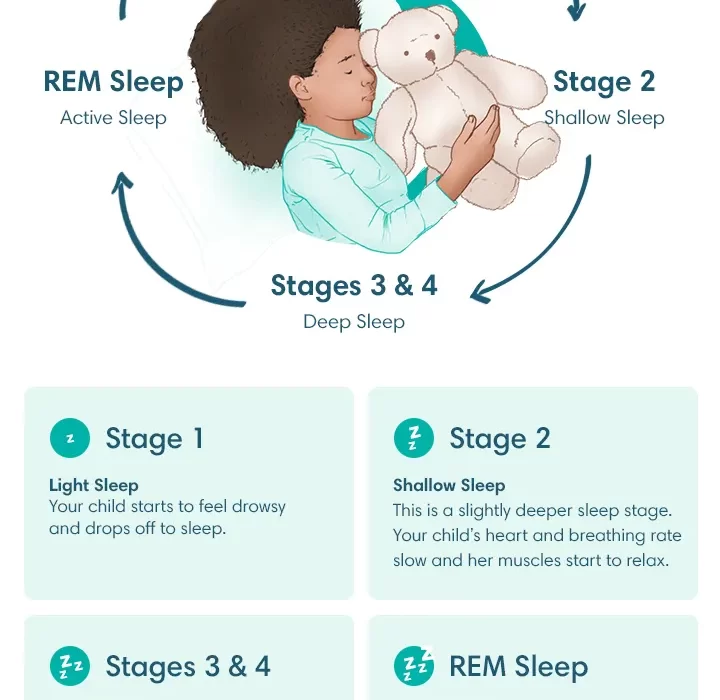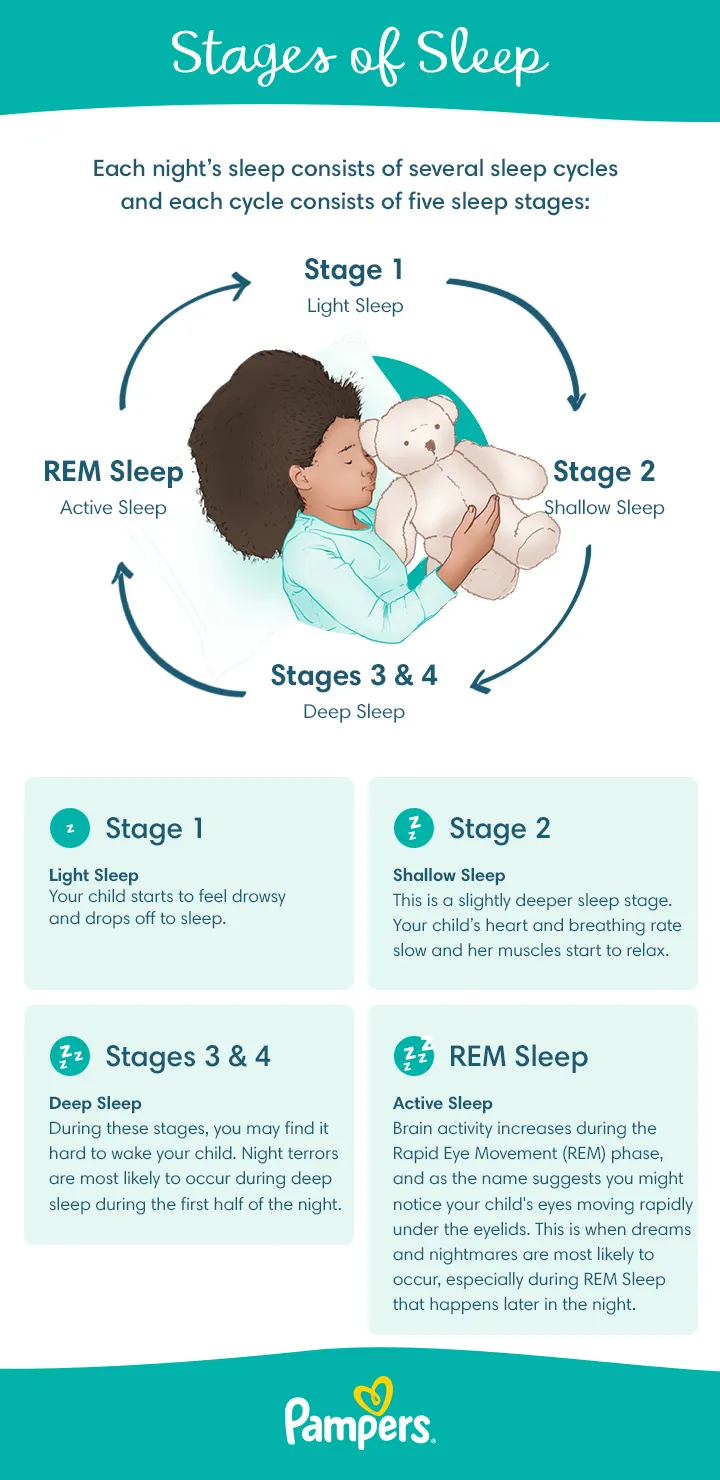Night terrors in children can be a distressing experience for both the child and their parents. As adults, we understand that nightmares are a normal part of life, but it can be challenging to witness our little ones going through these episodes of intense fear and confusion. So, what can you do to prevent night terrors in children? Let’s explore some practical strategies that may help alleviate these nighttime frights and promote more restful sleep for your little one.
One key approach is to establish a consistent bedtime routine. Children thrive on structure and predictability, so creating a calming routine before bed can help signal to their bodies and minds that it’s time to wind down. Incorporate soothing activities like reading a book, taking a warm bath, or listening to soft music. Encourage relaxation techniques such as deep breathing or gentle stretching to help them relax their bodies and minds before sleep. By implementing a consistent routine, you can create a sense of security and stability that may reduce the likelihood of night terrors.
Another important factor to consider is the sleep environment. Ensure that your child’s bedroom is conducive to a peaceful slumber. Keep the room dimly lit and at a comfortable temperature. Consider using a nightlight or a comforting object like a stuffed animal or blanket to provide a sense of familiarity and comfort. Additionally, minimizing stimulating activities or screens close to bedtime can help prevent overstimulation, which can contribute to night terrors. By creating a tranquil and cozy sleep environment, you can create the ideal conditions for a restful night’s sleep and potentially reduce the occurrence of night terrors in your child.
Remember, every child is unique, and what works for one may not work for another. It may take some trial and error to find the strategies that are most effective for your little one. With patience, consistency, and a loving approach, you can help create a peaceful and comforting bedtime routine that may significantly reduce the occurrence of night terrors in your child.
Preventing Night Terrors in Children: A Comprehensive Guide
Night terrors can be a distressing experience for both children and parents alike. These episodes of intense fear and panic can disrupt sleep patterns and leave children feeling exhausted and anxious. As a parent, it is important to understand the causes of night terrors and what you can do to prevent them. In this article, we will explore various strategies and techniques that can help minimize the occurrence of night terrors in children.
Understanding Night Terrors
Night terrors, also known as sleep terrors, are a type of parasomnia that typically occurs during deep sleep. Unlike nightmares, which are vivid and can be recalled upon waking up, night terrors are characterized by a sudden onset of agitated behavior, screaming, and intense fear. Children experiencing night terrors may appear to be awake, but they are actually in a state of deep sleep and are often unresponsive to attempts to wake them up.
Night terrors usually last for a few minutes and can be extremely distressing for both the child and the parents. They are more common in children aged 3 to 8 years old, but can occur at any age. While the exact cause of night terrors is still unknown, several factors have been identified as potential triggers, including genetics, stress, sleep deprivation, and fever.
Creating a Calm and Soothing Sleep Environment
One of the key strategies to prevent night terrors in children is to create a calm and soothing sleep environment. A peaceful bedroom can help promote a sense of security and relaxation, reducing the likelihood of night terrors. Here are some tips to create an ideal sleep environment for your child:
1. Establish a Consistent Bedtime Routine
A consistent bedtime routine can signal to your child’s brain that it’s time to wind down and prepare for sleep. Establish a routine that includes relaxing activities such as reading a bedtime story or having a warm bath. Consistency is key, so try to stick to the same routine every night.
2. Ensure a Comfortable Sleep Environment
Make sure your child’s bedroom is comfortable and conducive to sleep. Keep the room at a cool temperature, dim the lights, and use blackout curtains if necessary to create a dark environment. Provide a comfortable mattress and pillows that support a good sleeping posture.
3. Create a Relaxing Atmosphere
Use soothing sounds, such as soft music or white noise, to create a relaxing atmosphere in your child’s bedroom. Avoid loud noises or sudden disruptions that can startle your child during sleep. Consider using a nightlight if your child feels more secure with a dim light.
4. Promote a Stress-Free Bedtime
Help your child unwind before bed by engaging in calming activities such as reading a book together or practicing deep breathing exercises. Avoid stimulating activities or screen time close to bedtime, as they can interfere with the sleep-wake cycle.
Managing Stress and Anxiety
Stress and anxiety can contribute to the occurrence of night terrors in children. By helping your child manage stress and anxiety, you can reduce the frequency and intensity of these episodes. Here are some strategies to consider:
1. Encourage Open Communication
Create a safe and supportive environment where your child feels comfortable expressing their feelings. Encourage open communication and listen attentively to their concerns. Assure them that it is normal to feel scared or anxious at times and that you are there to support them.
2. Teach Relaxation Techniques
Teaching your child relaxation techniques can help them cope with stress and anxiety. Deep breathing exercises, progressive muscle relaxation, and visualization techniques can all be effective in promoting relaxation and reducing tension before bedtime.
3. Establish Healthy Coping Mechanisms
Help your child develop healthy coping mechanisms to manage stress. Encourage them to engage in activities they enjoy, such as hobbies or sports, to help them relax and unwind. Provide them with reassurance and guidance when faced with challenging situations.
4. Seek Professional Help if Needed
If your child’s night terrors persist or significantly impact their daily life, it may be beneficial to seek professional help. A pediatrician or a child psychologist can provide guidance and support in managing your child’s stress and anxiety.
By implementing these strategies and creating a supportive sleep environment, you can help prevent night terrors in children. Remember to be patient and understanding, as each child is unique and may require different approaches. With time and consistent effort, you can assist your child in having restful and peaceful nights, free from night terrors.
Key Takeaways: What can I do to prevent night terrors in children?
- Establish a consistent bedtime routine to help your child feel secure and relaxed.
- Avoid stimulating activities, screens, and sugar close to bedtime.
- Create a calming sleep environment with dim lights and a comfortable temperature.
- Provide reassurance and comfort during night terrors, but avoid waking your child.
- Consider consulting a healthcare professional if night terrors persist or cause distress.
Frequently Asked Questions
Parents often wonder what they can do to prevent night terrors in their children. Here are some commonly asked questions along with helpful answers to guide you in understanding and addressing this issue.
1. What are night terrors and why do they occur in children?
Night terrors are episodes of intense fear or terror that occur during sleep. They usually happen during the first few hours of sleep and can last for a few minutes. Night terrors are more common in children, particularly between the ages of 3 and 8, and are thought to be caused by an over-arousal of the central nervous system during sleep. They may be triggered by factors such as sleep deprivation, stress, fever, or certain medications.
To prevent night terrors, it is important to establish a consistent bedtime routine, ensure that your child gets enough sleep, and create a calm and relaxing sleep environment.
2. How can I establish a consistent bedtime routine?
A consistent bedtime routine helps signal to your child’s body that it’s time to wind down and prepare for sleep. Start by setting a regular bedtime and stick to it as much as possible, even on weekends. Establish a routine that includes activities such as brushing teeth, reading a book, and gentle stretching or relaxation exercises. Avoid stimulating activities, screen time, and sugary snacks close to bedtime.
By following a consistent bedtime routine, you can help your child’s body and mind transition into a relaxed state, reducing the likelihood of night terrors.
3. How can I ensure that my child gets enough sleep?
Adequate sleep is crucial for preventing night terrors. Make sure your child has a comfortable and supportive mattress, a quiet and dark sleep environment, and a regular sleep schedule. Avoid caffeine and sugary foods, especially in the evening, as they can interfere with sleep. Encourage daytime physical activity to promote tiredness at bedtime.
If your child consistently has difficulty falling asleep or staying asleep, it may be helpful to consult a pediatrician or sleep specialist for further evaluation and guidance.
4. How can I create a calm and relaxing sleep environment?
The sleep environment plays a significant role in promoting restful sleep and reducing the occurrence of night terrors. Ensure that the bedroom is cool, quiet, and dark. Use blackout curtains or an eye mask if necessary. Remove electronic devices and screens from the bedroom, as the blue light emitted can interfere with sleep. Consider using a white noise machine or a fan to create a soothing background noise.
Additionally, provide your child with comfort objects such as a favorite stuffed animal or blanket to help them feel secure and relaxed during sleep.
5. Are there any other strategies to prevent night terrors?
In addition to the aforementioned tips, it may be helpful to identify and address any potential triggers for your child’s night terrors. Keep a sleep diary to track patterns and possible triggers, such as certain foods, medications, or stressful events. If you notice a correlation between certain triggers and night terrors, discuss this with your child’s healthcare provider for further guidance.
It’s important to remember that night terrors are usually a phase that children outgrow as they get older. However, if night terrors persist or significantly disrupt your child’s sleep or daily functioning, it is advisable to seek professional help to rule out any underlying issues and develop an appropriate management plan.
How to prevent ‘night terrors’ in your children
Final Thoughts on Preventing Night Terrors in Children
When it comes to preventing night terrors in children, it’s important to remember that every child is unique and may have different triggers. However, there are some general strategies that can help reduce the occurrence of these unsettling episodes. By creating a soothing bedtime routine, ensuring a calming sleep environment, and addressing any underlying causes, you can make a significant difference in your child’s sleep quality and overall well-being.
One key aspect of preventing night terrors is establishing a consistent and relaxing bedtime routine. This routine can include activities like reading a bedtime story, listening to calming music, or engaging in a quiet and peaceful activity. By creating a sense of security and predictability, you can help your child relax and transition into a restful sleep. Additionally, it’s important to create a sleep environment that promotes relaxation. This can involve keeping the bedroom dark, quiet, and at a comfortable temperature. Eliminating any potential sources of stress or anxiety, such as excessive noise or bright lights, can greatly contribute to a peaceful night’s sleep.
Furthermore, it’s crucial to address any underlying factors that may be contributing to your child’s night terrors. This could involve identifying and managing stressors in their daily life, such as changes in routine or exposure to frightening media. Additionally, ensuring that your child is getting enough sleep and practicing good sleep hygiene can also play a significant role in preventing night terrors. By prioritizing healthy sleep habits and creating a supportive sleep environment, you can help your child feel safe and secure during the night.
In conclusion, preventing night terrors in children requires a combination of consistent bedtime routines, a calming sleep environment, and addressing any underlying causes. By implementing these strategies, you can help your child have a more peaceful and restful sleep, reducing the frequency and intensity of night terrors. Remember to be patient and understanding, as it may take time for your child’s sleep patterns to improve. With your love and support, you can make a positive impact on your child’s sleep and overall well-being.




